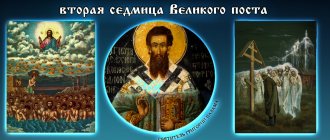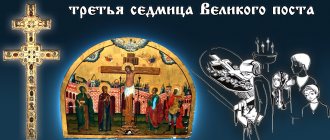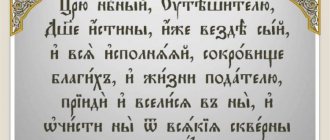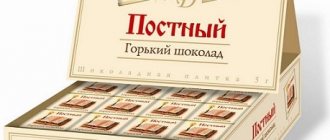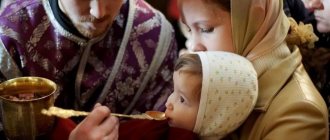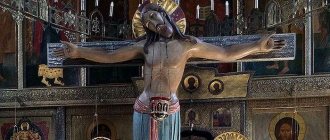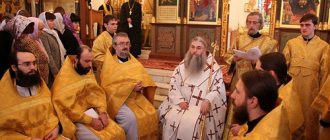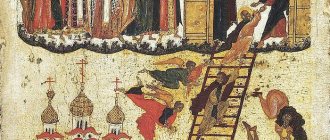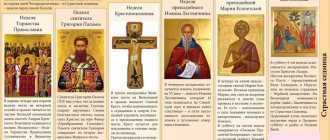Lent for Christian believers is a time of renewal, spiritual spring. This is a time of achievement, intense work on the soul. Fasting is mentioned in the Gospels, particularly in the Gospel of Matthew. They ask the Lord why John’s disciples fast, but he does not. To which Jesus Christ replies that the sons of the bridal chamber will fast when the Bridegroom is taken away from them.
The entire Great Lent is a preparation for the greatest event in world history - the Resurrection of God. To rise with Christ, you need to cleanse your soul and prepare it for the Holiday. Therefore, Lent is the means by which Orthodox Christians achieve the goal of participation in the crucifixion and resurrection of Jesus Christ.
Duration and timing
The Church calls Great Lent the Holy Pentecost. However, it lasts a little longer - Lazarus Saturday and Palm Sunday, as well as Holy Week are added to the 40 days of fasting - a total of 48 days.
The dates of Easter alternate, obeying the complex solar-lunar calendar adopted in ancient times by the Jews. According to the biblical narrative, the Lord was crucified during the celebration of the Jewish Passover , which commemorates the exodus of the Jews from Egypt. Orthodox Easter is tied to the Jewish one, and never occurs before it.
The Jewish Passover depends on the day of the vernal equinox. During the earthly life of Jesus Christ, this day was March 21. The Jewish Passover occurred on the first full moon after March 21, in the period from the 14th to the 21st month of Abib (Nisan). And now Jewish Easter begins to be celebrated on the first full moon after the spring equinox, and Orthodox Easter on the first Sunday after the first full moon. If the full moon falls on March 21 and Sunday, then Orthodox Easter takes place on March 28.
The full moon after the spring equinox occurs between March 21 and April 18. Therefore, Easter according to the Orthodox rite can be celebrated from April 4 to May 8 (new style). If the full moon falls on Sunday, April 18, then Easter is celebrated a week later, on April 25.
Note! The minimum possible period for which Easter takes all possible positions is called the Great Indiction and is 532 years.
Celebration of Easter in Catholic and Protestant denominations
The Roman Catholic Church determines the time of Easter celebration according to the Gregorian calendar and also takes the vernal equinox on March 21 as the starting point, but according to a new style. In this regard, Catholics celebrate Easter from March 22 to April 25. In some cases, Catholic Easter may coincide with Jewish Easter, and even precede it, which contradicts the Gospel narrative. This coincidence occurs because the Jews did not change the historical calendar, and count Nisan 14 from March 21 according to the Julian calendar, which corresponds to April 3 according to the Gregorian calendar.
Who may not fast during Lent?
Lent is strict and is followed by believers. It is permissible not to observe it for children, the sick, the infirm, and pregnant women, because health and care for the future generation is important.
Athletes during intense training and those engaged in physical labor can make concessions for themselves.
First of all, fasting is a personal feat for everyone, set a feasible level for yourself. His goal is not a ban on food, but repentance.
If one of the spouses observes fasting, but the other does not even think about it, then the marital duty must be fulfilled. 1 Corinthians 7:2 says, “But to avoid fornication, let each one have his own wife, and each one have her own husband.” The main thing is not to destroy the family, but to strengthen it.
Weeks of Lent
Fasting before Easter lasts less than 7 weeks, each of which is filled with its own spiritual meaning. All weeks have their own names, known both among the people and among the church.
First week
The first week of Lent is called the Week of Orthodoxy . At this time, strict fasting is required. The first four days in churches at Great Compline the penitential canon of St. Andrew of Crete . This canon is also called the Great, since it contains approximately 250 troparia (usually there are 30 in a canon). Great Compline with the reading of the canon of St. Andrew of Crete is called the “small station,” in contrast to Wednesday of the Week of the Cross, when the entire canon and life of Mary of Egypt is read at the evening service.
On Saturday the memory of Saint Theodore Tyrone . The day before, at the evening service, kolivo - boiled wheat grains with honey - is blessed. According to pious tradition, zealous Christians try not to eat boiled food throughout the first week of Lent, and already on Friday they eat kolivo.
The first week ends with the holiday of the Triumph of Orthodoxy. After Sunday liturgy, a prayer service is served in churches. At the end of the prayer service, the choir sings “Eternal Memory” to the deceased faithful children of the Church of Christ, and then many years to the living Christians.
Second week
In the second week of Lent, the Church prays for the grace-filled illumination of believers. All liturgical prayers of the second week are permeated with contrition about the sinful nature of humanity, its imperfection and point to fasting as a sure means of internal transformation and luminous illumination. The second week is called the week of light-giving fasting, or the week of Gregory Palamas.
Saint Gregory Palamas is known for his theological works on the Uncreated light of the Transfiguration, distinct from the created light. Briefly, this theological doctrine is that we believe in God, as stated in the Creed, “Light from light.” God Light created another light - created, as it is written in Genesis: “God said, let there be light.”
On Saturday of the second week , and then on the third and fourth weeks of Lent, a funeral service is served. Lenten Parental Saturdays are a time of special remembrance of the dead. On the eve, Parastas is celebrated - a funeral all-night service with the reading of the 17th kathisma and a requiem.
By the way, you should remember: from Compline on Friday to Vespers on Sunday, there is no prostration.
Third week
The third week is called the veneration of the cross. Usually at the beginning of Lent everyone is full of strength, has a good disposition and strives for achievement. Already by the third week, strength dries up, and believers need spiritual consolation. On Saturday, at Matins, the Cross is taken out of the altar to encourage those who are fasting and to strengthen them in their further journey through the field of fasting.
Fourth week
The fourth week of Lent is the week of John Climacus . The Monk John lived in the 6th century and became famous before God for his feat of solitude. From his youth to the age of forty, the saint of God John spent alone on Mount Sinai, and then moved to the Sinai desert of Thola, where he labored in strict fasting and incessant prayer for another 40 years.
The saint fasted all the time, eating very little Lenten food permitted by the Rule, but adamantly refrained from the movement of passions.
St. John wrote “The Ladder” - a spiritual guide for those who want to ascend to heaven. The book is divided into stages - according to the degrees of spiritual perfection.
The spiritual meaning of the fourth week is to affirm that fasting and prayer can open the staircase to heaven and lead to spiritual perfection, as in the case of St. John.
The Sunday Gospel of the fourth week preaches to the faithful that “this generation is driven out only by fasting and prayer” and announces the joyful news of the coming Resurrection of the Lord.
Fifth week
The fifth week of Lent is known as the week of St. Mary of Egypt . At Thursday morning (in practice - on Wednesday evening) the Great Canon of St. Andrew of Crete and the life of St. Mary of Egypt are read in the church. This service is called Mary's standing. The Church shows, using the example of Mary of Egypt, how the path of repentance transforms the human soul, leading it from the depths of sinful darkness to the perfect holiness of the disembodied angels.
Saturday of the fifth week is known as Praise of the Most Holy Theotokos or Akathist Saturday. The service is performed in memory of the intercession of the Queen of Heaven of the city of Constantinople from the invasion of enemies in the 7th century.
Sixth week
The sixth week is known as Vai, or Palm week . The Holy Pentecost ends on Friday. On Saturday, the Church remembers the miracle of the resurrection of righteous Lazarus. The news of the resurrection of the four-day-old man instantly spread among the Jews. The next day the Lord went to Jerusalem, where He was greeted by large crowds of people. The jubilant Jews greeted Jesus as a King and spread branches under His feet.
Lazarus Saturday and the Entry of the Lord into Jerusalem is a bridge from Holy Pentecost to Holy Week. Fasting is a way to achieve the goal: to be crucified with the Lord, to walk the way of the cross with Him, in order to be resurrected with Him.
At the evening service, willow branches are blessed. Believers carry these branches to the Sunday liturgy to symbolically meet the coming King of Glory.
Holy Week
Holy Week is the days of suffering, the death of the Lord on the cross, and His burial. Each day of Holy Week is called passionate, or great. On these days, the days of remembrance of saints are not remembered, the dead are not remembered. The spiritual meaning of Holy Week is communion with the passions of Christ. Despite the tragic events of Holy Week, believers joyfully realize the possibility of salvation obtained through the suffering and death of the Savior.
Every day special services are held in the Church. On Thursday morning they serve the Liturgy of St. Basil the Great in remembrance of the Last Supper . At Vespers on this day, the 12 passionate Gospels are read. According to pious tradition, they listen to the Gospel with lit candles, and then try to bring the light home.
On Good Friday, at Vespers, the Shroud is taken out as a symbol of the removal of the Most Pure Body from the Cross.
Orthodox Life
Priest Andrei Chizhenko tells.
How in Orthodox worship, with God’s help, everything is linked into a single whole!
Forgiveness resurrection, when the expulsion of the holy forefathers Adam and Eve from paradise is remembered.
And on Monday of the first week the Royal Doors are already closed. They are not opened at any service. And all those praying in the temple - all the descendants of Adam - cry, fast and pray at the closed Royal Doors, at the closed gates of heaven.
Reading of the Great Penitential Canon of St. Andrew of Crete. This wonderful, beautiful and holy work depicts in a condensed form the Sacred History of the Old and New Testaments. All this multitude of people who are written about in the canon seems to grow before us and pass before our heart’s gaze with the main goal - to awaken in us repentance, awareness of our own sinfulness and the need for saving healing, which only God can give.
And the main attitude that we need to acquire for healing is repentance. Repentance is the door to heaven. Through them only one can get into the Kingdom of Heaven. This is, perhaps, the key and universal thought of St. Andrew of Crete, his message, his prayer addressed to all of us.
Continuing the theme of Adam’s exile and the Great Canon, read during the first week of the Holy Pentecost, I would like to say that we seem to be led into the wilderness of Great Lent, where we must beg for forgiveness through repentance, prayer and fasting. Therefore, church services during this period are dominated by prayers from the Old Testament, when humanity was awaiting the coming of the Messiah promised by God, just as we should expect the Bright Resurrection of Christ. We must fight for our salvation, just as the Jews fought for the Promised Land, maintaining true faith in the Lord and trusting in Him. Among the liturgical prayers of the Lenten period there are many kathismas of the Psalter, biblical songs, and verses of the Lenten Triodion, which attune the soul to repentance, soften it, making it capable of perceiving the heavenly laws of life in God. Of course, during this period there is a lot of genuflection in the services, and they are especially associated with the prayer of St. Ephraim the Syrian - this verbal arrow, this prayer with raised hands (and there are few such prayers in the liturgical life of the Church, but they are always culminating, the most important), when we open, like children, we bring our souls before God and ask Him to heal our passions, bestow virtues, teach repentance and love. We ask first of all for God's grace and believe that the Lord will definitely give it for the sake of our salvation.
On Wednesday and Friday of the first week and all subsequent Great Lent until Passion, the Liturgy of the Presanctified Gifts is celebrated. At these services, bread, water and wine are not transformed into the Body and Blood of Christ. But the Holy Gifts prepared on the previous Sunday are given to believers, so that the Lord sanctifies them and strengthens them during Lent. On Friday of the first week of the Holy Pentecost, after the Liturgy of the Presanctified Gifts, the canon is read to the Great Martyr Theodore Tiron and the Kolivo is consecrated in honor of the event when, about 50 years after his death, this saint appeared to Christians and warned that the pagan emperor Julian the Apostate had ordered all products in the markets sprinkle with blood sacrificed to idols. Then the Christians, in order not to be defiled, prepared kolivo and ate it.
This memory also strengthens us in fasting by the fact that God always cares for His faithful and helps them, leading them on the path to salvation.
On Saturday and Sunday during all weeks of the Holy Pentecost, the fast is relaxed. The Liturgy is served. On Saturday - St. John Chrysostom, and on Sunday - St. Basil the Great. You can eat plant foods with oil.
On Sunday of the first week of Great Lent we celebrate the Triumph of Orthodoxy. The historical history of this holiday tells us that after almost a century of struggle, icon veneration defeated iconoclasm in the middle of the 9th century. And the fact that holy icons and relics are shrines for the Church was testified by the procession of the cross in Constantinople, which, with the carrying of icons and relics, took place in 843 on the first Sunday of Lent. Hence our tradition of holding religious processions with holy images and relics on this day.
The first week of Great Lent, together with the holiday of the Triumph of Orthodoxy, is a certain symbol, a prototype of Great Lent and the Easter that follows it.
The Triumph of Orthodoxy is a prototype of the Holy Resurrection of Christ. A symbol that God will win and the Church will definitely win. And our task is to stay in Her at all costs, and She, like a ship of salvation, will take you to the Kingdom of Heaven.
In the meantime, let us free ourselves from the ballast of sins, the unnecessary burden of excessive attachments to material goods, from the cancerous tumors of passions, let us free ourselves by going through Great Lent, which is a saving, proven medicine established by our Lord Jesus Christ Himself (see Matt. 4).
Priest Andrey Chizhenko
Features of the services of Great Lent
Lenten services differ significantly from those performed at other times. All prayers are aimed at awakening a feeling of repentance, in-depth contemplation of inner, secret feelings.
Distinctive features of Lenten services:
- no liturgy on Mondays, Tuesdays and Thursdays;
- on Wednesdays and Fridays the Liturgy of the Presanctified Gifts is celebrated;
- During the week, the Psalter is read twice during services;
- from Monday to Friday the prayer of Ephraim the Syrian is read with 4 great and 12 small bows;
- at Matins “Hallelujah” is sung instead of “God the Lord”;
- depending on the voice of Octoechos and the day of the week, ternary, sedalny according to the first verse and luminary are selected;
- at Vespers, 2 prokeimnas are proclaimed and 2 proverbs are read;
- at Great Compline, special hymns are sung: “God is with us,” “The day has passed,” “Lord of hosts be with us”;
- on Saturdays of the 2nd, 3rd and 4th weeks there are funeral services;
- On Sundays they serve the Liturgy of St. Basil the Great.
The services of Holy Week have their own characteristics, as do Lazarus Saturday and the Entry of the Lord into Jerusalem.
